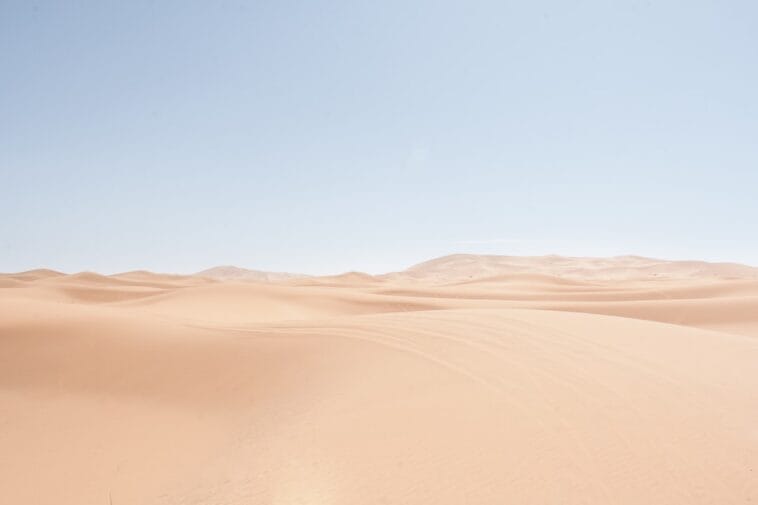African deserts are often overlooked when it comes to travel destinations, but they hold a unique and breathtaking beauty that is unlike anywhere else in the world. One such desert that stands out is Desert 215, located in Namibia. This desert is known for its stunning landscapes, diverse wildlife, and cultural significance. In this article, we will explore the beauty of Desert 215 and the African deserts as a whole, highlighting their unique experiences and the wonders they hold.
Key Takeaways
- Desert 215 offers a unique and awe-inspiring experience for travelers.
- The Sahara is the largest hot desert in the world, with stunning landscapes and diverse wildlife.
- Traveling through the desert requires preparation and knowledge of the environment.
- Desert adventures offer the opportunity to explore the unknown and embrace the cultural significance of African deserts.
- Embrace the wonders of Desert 215 and discover the beauty and diversity of African deserts.
The Beauty of Desert 215
Desert 215 is a hidden gem in Namibia, known for its vast landscapes and stunning natural beauty. The desert is characterized by its golden sand dunes that stretch as far as the eye can see, creating a mesmerizing sight that is truly awe-inspiring. These dunes are constantly shifting and changing shape, creating a dynamic landscape that is ever-evolving.
In addition to the sand dunes, Desert 215 is also home to unique rock formations that have been sculpted by wind and time. These formations create a surreal and otherworldly atmosphere, transporting visitors to a different time and place. The contrast between the soft curves of the dunes and the rugged edges of the rocks creates a visual feast for the eyes.
The wildlife in Desert 215 is also a sight to behold. Despite the harsh conditions of the desert, a surprising array of animals call this place home. From the graceful oryx to the elusive desert fox, visitors have the opportunity to witness these incredible creatures in their natural habitat. The desert also attracts a variety of bird species, making it a paradise for birdwatchers.
African Deserts: A Unique Experience
African deserts offer a unique travel experience compared to other destinations around the world. The vastness and emptiness of these deserts create a sense of solitude and tranquility that is hard to find elsewhere. Traveling through the desert, one can truly disconnect from the hustle and bustle of everyday life and immerse themselves in the beauty of nature.
Furthermore, African deserts hold a deep cultural significance. They have been home to indigenous communities for centuries, who have developed a deep connection with the land and its resources. The desert is not just a physical landscape, but a spiritual one as well. It is a place of reflection, meditation, and connection with the divine. Visitors to African deserts have the opportunity to learn about and experience these cultural traditions firsthand.
Sahara: The Largest Hot Desert in the World
| Fact | Measurement |
|---|---|
| Location | Africa |
| Size | 9.2 million square kilometers |
| Climate | Hot and arid |
| Temperature | Up to 50°C during the day and below freezing at night |
| Flora | Acacia trees, date palms, and other drought-resistant plants |
| Fauna | Dromedary camels, desert foxes, and sand cats |
| Population | Approximately 4 million people |
| History | Home to ancient civilizations such as the Egyptians and Carthaginians |
The Sahara desert is perhaps the most well-known African desert, and for good reason. It is the largest hot desert in the world, covering an area of over 9 million square kilometers. Located in North Africa, it spans across several countries including Algeria, Chad, Egypt, Libya, Mali, Mauritania, Morocco, Niger, Sudan, and Tunisia.
The Sahara is known for its vast sand dunes that can reach heights of up to 180 meters. These dunes create a mesmerizing landscape that stretches as far as the eye can see. The shifting sands create an ever-changing canvas of colors and patterns, making it a paradise for photographers and nature enthusiasts.
In addition to the sand dunes, the Sahara is also home to unique rock formations and mountains. The Tassili n’Ajjer mountain range in Algeria is a UNESCO World Heritage Site and is known for its stunning rock art that dates back thousands of years. The Ahaggar Mountains in Algeria are another highlight of the Sahara, with their rugged peaks and deep canyons.
Desert Landscapes: Awe-Inspiring Views
African deserts are known for their diverse landscapes that offer awe-inspiring views at every turn. From towering sand dunes to rugged mountains and deep canyons, there is something for everyone to marvel at.
One of the most iconic landscapes in African deserts is the sand dunes. These towering mounds of sand create a surreal and ethereal atmosphere, especially during sunrise and sunset when the colors of the sky reflect off the sand. The Sossusvlei dunes in Namibia are particularly famous, with their vibrant red color and dramatic shapes.
In addition to the sand dunes, African deserts are also home to stunning mountain ranges. The Atlas Mountains in Morocco and Algeria are a sight to behold, with their snow-capped peaks and deep valleys. These mountains offer breathtaking views and opportunities for hiking and trekking.
Deep canyons are another highlight of African deserts. The Fish River Canyon in Namibia is one of the largest canyons in the world, offering stunning views and opportunities for hiking. The Todra Gorge in Morocco is another popular destination, with its towering cliffs and narrow passageways.
African Wildlife in the Desert

Contrary to popular belief, African deserts are not barren wastelands devoid of life. In fact, they are home to a surprising array of wildlife that has adapted to survive in these harsh conditions.
One of the most iconic animals of African deserts is the camel. These majestic creatures have been used for centuries as a means of transportation in desert regions. They are well-adapted to the arid conditions, with their ability to store water and withstand extreme temperatures.
Gazelles are another common sight in African deserts. These graceful antelopes have evolved to survive in the harsh desert environment, with their long legs and keen senses. They can be seen gracefully bounding across the sand dunes, their elegant movements a testament to their adaptability.
Desert foxes are also a common sight in African deserts. These small carnivores have adapted to survive in the harsh conditions by being nocturnal and having large ears to dissipate heat. They are elusive creatures, but with a bit of luck and patience, visitors may catch a glimpse of them in their natural habitat.
Traveling Through Desert 215: Tips and Tricks
Traveling through Desert 215 requires careful planning and preparation to ensure a safe and enjoyable experience. Here are some practical tips and tricks to keep in mind:
1. Pack appropriately: The desert can be extremely hot during the day and cold at night, so it is important to pack clothing that can accommodate these temperature fluctuations. Lightweight, breathable clothing is recommended during the day, while warm layers are essential for the chilly nights.
2. Stay hydrated: It is crucial to drink plenty of water while traveling through the desert to avoid dehydration. Carry a sufficient supply of water with you at all times and drink regularly, even if you do not feel thirsty.
3. Protect yourself from the sun: The desert sun can be intense, so it is important to protect yourself from harmful UV rays. Wear a wide-brimmed hat, sunglasses, and sunscreen with a high SPF.
4. Use a GPS or hire a guide: Navigating through the desert can be challenging, especially for first-time visitors. It is recommended to use a GPS or hire a guide who is familiar with the area to ensure you stay on track and avoid getting lost.
5. Respect the environment: African deserts are fragile ecosystems that should be treated with respect. Avoid littering and damaging the natural surroundings, and follow any guidelines or regulations set by local authorities.
Desert Adventures: Exploring the Unknown
One of the most exciting aspects of traveling through African deserts is the opportunity for adventure and exploration. From camel treks to hot air balloon rides, there are plenty of unique experiences to be had.
Camel treks are a popular way to explore the desert, allowing visitors to experience the traditional mode of transportation used by desert dwellers for centuries. Riding a camel through the vast sand dunes is a truly unforgettable experience that will transport you back in time.
Hot air balloon rides offer a different perspective of the desert, allowing you to soar above the dunes and take in the breathtaking views from above. The silence and tranquility of floating in the air provide a sense of peace and serenity that is hard to find elsewhere.
For the more adventurous souls, sandboarding is a thrilling activity that combines the exhilaration of snowboarding with the unique terrain of the desert. Sliding down the sand dunes at high speeds is an adrenaline rush like no other.
The Cultural Significance of African Deserts
African deserts hold a deep cultural significance, particularly for indigenous communities who have lived in these regions for centuries. The desert is not just a physical landscape, but a spiritual one as well.
For many indigenous communities, the desert is seen as a sacred place where they can connect with their ancestors and the divine. It is a place of reflection, meditation, and spiritual renewal. Rituals and ceremonies are often performed in the desert to honor and seek guidance from the spirits.
The desert also plays an important role in traditional livelihoods. Indigenous communities have developed unique ways of surviving in these harsh conditions, such as herding livestock or practicing traditional crafts. These traditions are passed down from generation to generation, ensuring the preservation of cultural heritage.
Embracing the Wonders of Desert 215
African deserts, such as Desert 215, hold a unique and breathtaking beauty that is unlike anywhere else in the world. From the stunning landscapes to the diverse wildlife and rich cultural traditions, there is something for everyone to marvel at and appreciate.
By embracing the wonders of African deserts, we can gain a deeper understanding and appreciation for these unique ecosystems and the people who call them home. So, why not consider African deserts for your next travel destination? You won’t be disappointed.
Check out this article on African Sahara’s website about the Coastal Circuit Safaris and Holidays in Kenya. It provides a comprehensive guide to exploring the beautiful coastal region of Kenya, including popular destinations and activities. Whether you’re interested in relaxing on pristine beaches, visiting historical sites, or experiencing thrilling water sports, this article has got you covered. Don’t miss out on this amazing opportunity to discover the hidden gems of Kenya’s coast. Read more


